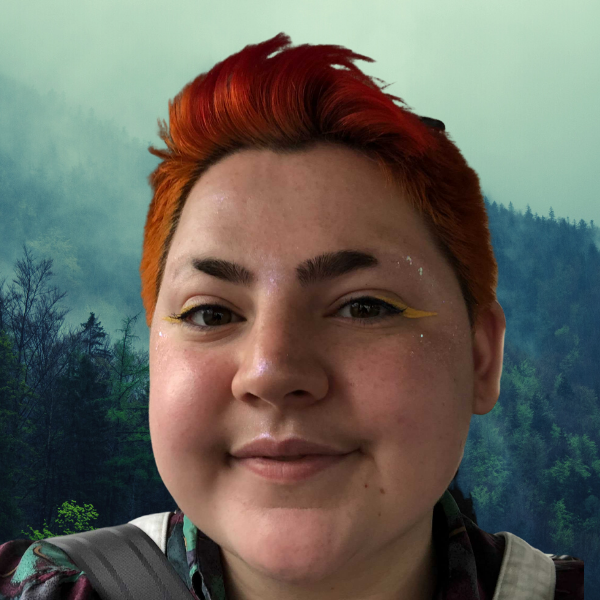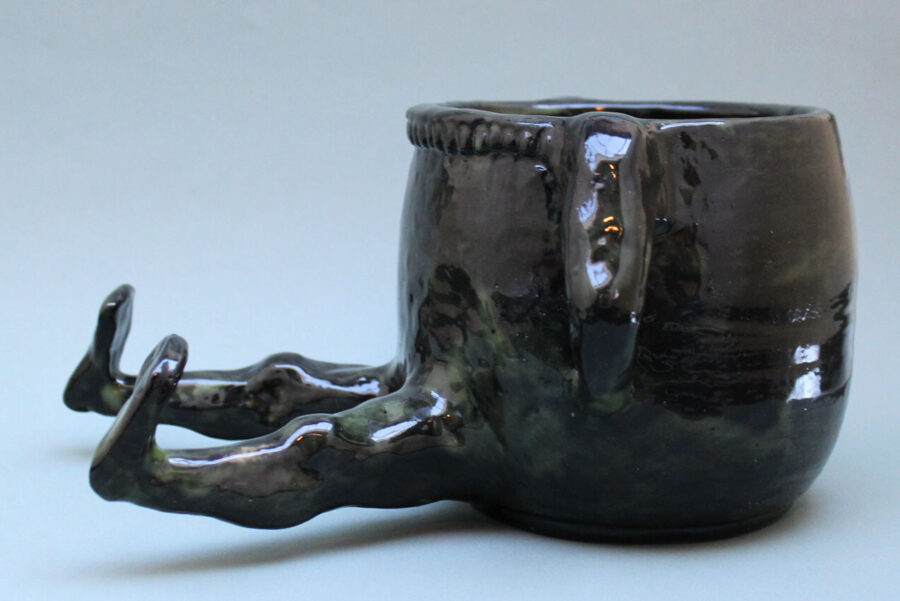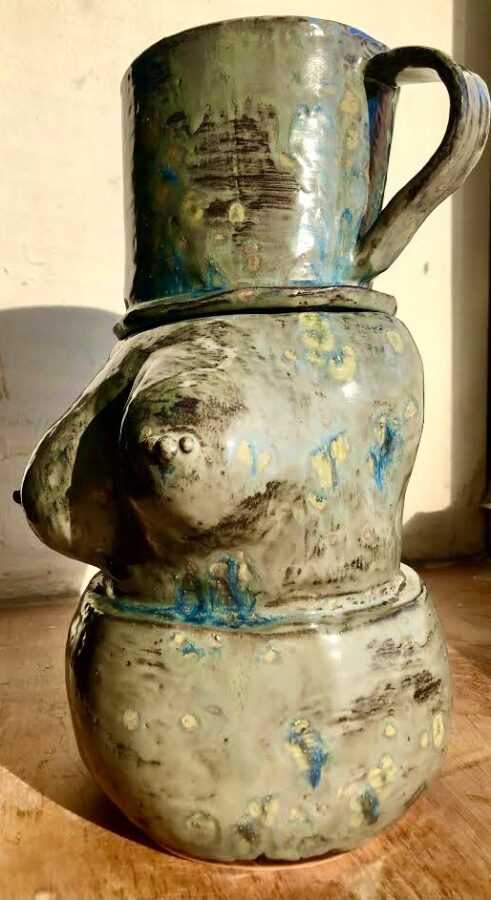#ambassadors
Meet TCI Intern Roenick Goldman
By TCI Intern Roenick Goldman
Ambassador’s Note: I would like this introductory post to be as vulnerable and authentic as possible, but I also want those who may be triggered by the following text to know that they are seen and their boundaries are valued, thus this content warning: LGBTQ+, self image in terms of gender and society, mental health, personal growth, climate change from the youth’s perspective.
My name is Roenick (rōnik), Roe and Grey work as nicknames. I use They/Them pronouns and neutral terms of reference (i.e. person or colleague, not ma’am, lady or sir). I am from a suburb north of Philadelphia, Pennsylvania where I graduated high school in 2020. I am now working to earn my Bachelors of Fine Arts with a concentration in ceramics at Maine College of Art. I have experience with printmaking, textiles, sewing, digital illustration, and 3d and 2d installations, but most of my experience lies in ceramics. I have a small business called rg ceramics where I sell my work and promote an accessible view on fine art.

“Personally, I think the most glaring and direct way art interacts with climate is that Earth itself is art and preserving the art that is this planet is more important than ever as we progress into irreversible damage.”
I am queer and gender nonconforming, and though those identities don’t define me they are huge aspects of my existence in this world and lifetime. My art is heavily impacted by my identities. I like to look at it as my art is the product of my body finally synchronizing with my mind to create works exactly how I envision it throughout the process. I use the word ‘finally’ because for my whole life I have been in conflict with my body. Whether it was as a result of how I thought my body should look according to ‘society’ or how I felt my body should look based on the discomfort that I didn’t understand was dysphoria until the summer of 2019. Though I am only a budding artist, I have had the pleasure to work with professors who helped me discover a good amount of what my art means to me now. I can now confidently say that my art relates to the viewer as a reminder of their impact on something/person/being, including themselves.

Continuing on how we relate to ourselves, I have aspirations to do many different jobs over the course of my life, another valuable lesson from my professors this year: I can do anything and everything I want to and I have an entire life to do it! One career goal is to work as an art therapist with queer and neurodiverg![]() ent people specifically but not exclusively. To clarify, neurodiversity and terms of the like address discrepancies in brain functions like mood, learning, social interactions and attention in a neutral and de-stigmatizing way. This can apply to mental health conditions like depression, ADHD, autism and OCD. I addressed my queer identities, but I want to work with neurodiverse people because I am neurodivergent as well. I am learning how it impacts me while also building systems that help me and I want to help other like minded people do the same.
ent people specifically but not exclusively. To clarify, neurodiversity and terms of the like address discrepancies in brain functions like mood, learning, social interactions and attention in a neutral and de-stigmatizing way. This can apply to mental health conditions like depression, ADHD, autism and OCD. I addressed my queer identities, but I want to work with neurodiverse people because I am neurodivergent as well. I am learning how it impacts me while also building systems that help me and I want to help other like minded people do the same.

I would also love to work in an occupation that involves fighting for the communities and issues I believe in, like what I am doing now with TCI. I value how TCI views the climate crisis especially because they believe in pushing and empowering youth voices around climate change forward.
As a small side note, just today we had our all-staff meeting where Pooja, youth network strategic consultant and founder of Youth Climate Collaborative, talked about an amazing project that showed a clear understanding of how the younger generations may view and react to climate change. Though I have overcome some of the examples she mentioned, I felt very seen as a young person in this climate crisis, which is something I highly appreciate.
TCI brought me on their team to help address the intersection of art and climate change which isn’t really just one single ‘intersection’ per say. It can be as simple as art made about climate change but it can also be as complex as how you can properly dispose of an art material or who you buy that material from. Personally, I think the most glaring and direct way art interacts with climate is that Earth itself is art and preserving the art that is this planet is more important than ever as we progress into irreversible damage. I care so deeply about a variety of issues in the world and working on fixing a number of them with such an astounding group of people is more than I could have ever imagined doing just one year after high school.
My goal for my time here with TCI is to not only learn and grow as a climate activist but to create works and media to invite the audience into this more-important-than-ever discussion about climate change. On that note of looking forward to thriving in this opportunity, thank you for reading and being a supporter of TCI’s mission!
